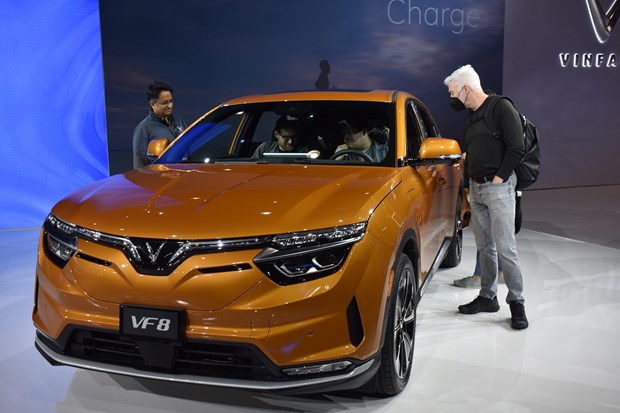HCMC – Vietnam expects to phase out fossil fuel-powered vehicles by 2040 through steps to restrict and then stop manufacturing, assembling and importing vehicles running on fossil fuels and switching to electric vehicles.
Deputy Prime Minister Le Van Thanh has just signed Decision No.876 approving an action plan on green energy transition and reduction of carbon dioxide and methane emissions in the local transport industry, Thanh Nien Online reports.
Under the action plan, the transition to green energy is considered the most important task in the country’s efforts to achieve green growth goals and fulfill Vietnam’s energy commitments at the UN Climate Change Conference in Glasgow (COP26) late last year. It is also an opportunity for the local transport sector to develop synchronously in a modernized and sustainable manner, thereby being able to catch up with the latest development trends in the world.
The overall objective of the plan is to develop a green transportation system to achieve net zero emissions by 2050.
Specifically, for the road transport sector, the clean energy transition will be executed in two phases.
In the first phase from 2022 to 2030, the country will facilitate the production, assembly, import of, and switch from gasoline to electric vehicles. Besides, the country will expand activities of mixing and using 100% bio-fuel E5 gasoline for vehicles.
In addition, the country will boost the development of electric vehicle charging stations. Coach stations and rest stops are encouraged to adopt practices for the clean energy transition.
In the second phase between 2031 and 2050, the transport sector will phase out vehicles using fossil fuels by 2040.
By 2050, all vehicles will switch to using electricity and other sources of clean energy. All coach stations and rest stops must meet the green energy criteria. All fossil fuel-powered loading machines and equipment will also solely use electricity and clean energy.
Vietnam’s fossil-fuel vehicle phase-out roadmap is reportedly slower than that of other Southeast Asian countries. However, the roadmap is on par with the country’s transport infrastructure system as well as the scale and capacity of the local auto and motorcycle industry.









